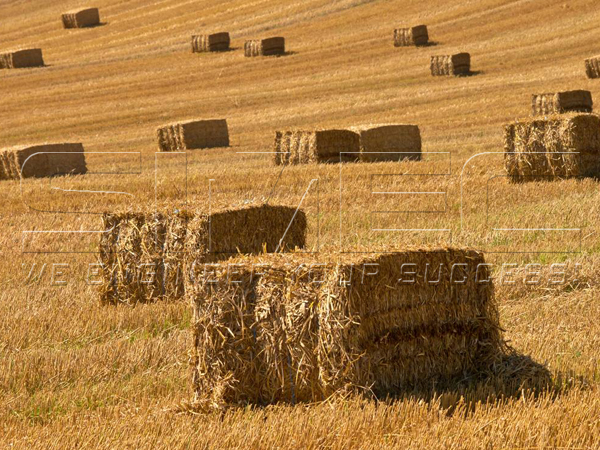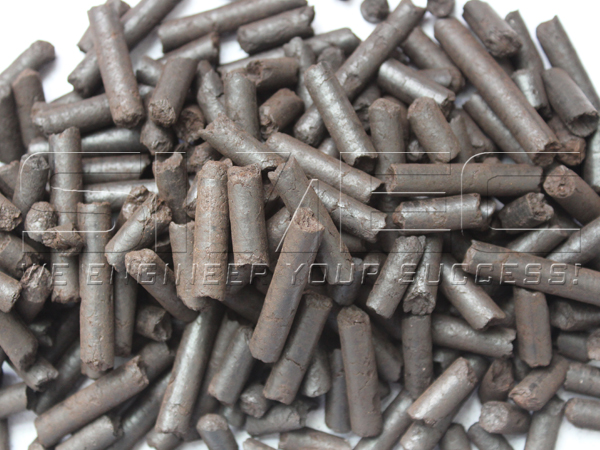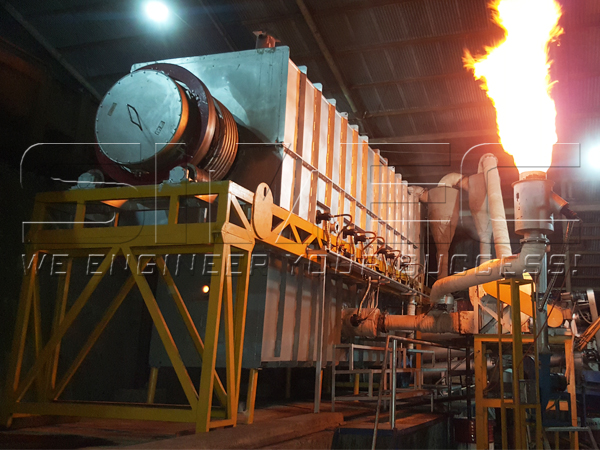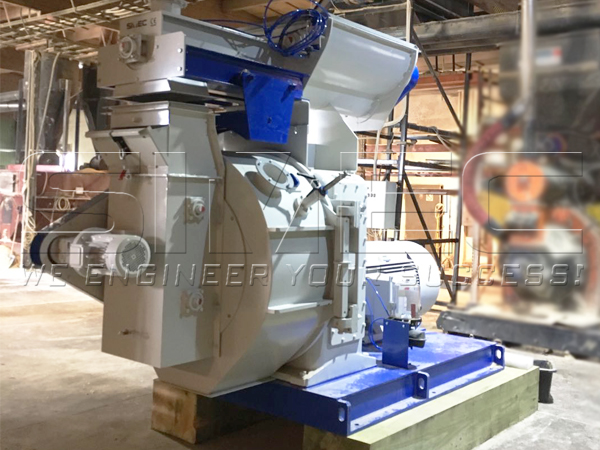Agro Residue Based Torrefied Biomass Pellets
As people may be aware that stubble burning has been cited as a major cause of smog in some agriculture areas. Stubble burning is deliberate setting fire of the straw stubble that remains after harvesting of paddy and other crops. Instead of burning in open fields, these can be collected, processed and can be used as Biomass fuel to generate power.
Biomass Co-firing is a well proven technology. With increasing environment awareness, power plants all over the world have adopted Biomass Co-firing as a strategy to combat air pollution. Biomass Co-firing is recognized as a carbon neutral technology for mitigation of carbon emission from coal based power plants.
It’s proved that Co-firing of 5%~10% blend of Biomass pellets is successful. This can be replicated in all of the coal fired power plants having bowl mills / vertical roller mills / beater mills. Torrefaction technology makes it feasible to blend much higher proportion of biomass pellets. It is also possible to replace of coal in existing coal based thermal power plants. Because torrefied biomass pellets have related characteristics with coal.
SIMEC torrefaction technology is developed to torrefy both woody biomass and agro residue based biomass, such as paddy straw, rice husk, nut shells, etc. Torrefied biomass pellet improves many material aspects in relation to conventional white pellet, such as increased hydrophobicity which results in possible onsite storage advantage, shipping in open trucks or boats; higher energy density which results in lower transportation costs; fragile feature results in lower pulverizing costs in power plants which use Pulverized Coal Fired Boilers. Torrefied pellet is a possible replacement for coal.

Straw Stubble Bales

Torrefied Straw Pellets
A number of key economies in Asia and Europe have developed incentive policies for biomass co-firing in coal-based power plants. The utilization of biomass solid fuel, especially agro residue based torrefied pellets, will greatly reduce smog caused by stubble burning in some agriculture areas. Paddy straw / husk and other agro residue will become valuable raw material for Biomass fuel production.
SIMEC Pellet Union is invited to supply torrefied pellets to power plants in India, for power generation through biomass co-firing. But the torrefied pellets must be made of paddy straw and other agro residue based material. Wood based pellets will not be acceptable. We appreciate such a policy which will benefit the farmers and environment protection.
Specification requirments for pellet vary in different markets. So before engineering work, it's important to confirm specification requirement for torrefied pellets and make analysis. SIMEC have set up torrefied pellet projects for multi customers that process a variety of biomass raw materials, such as wood wastes, straws, elephant grass, etc. The projects are designed to produce torrefied pellets in different markets.
To help more clients and investors, we have decided to make some market info public. It includes acceptable technical specification for torrefied pellets, raw material requirements and other important statements about supply of torrefied pellets. SIMEC will help more clients to set up torrefied biomass pellet plants.

Biomass Torrefaction Plant

Biomass Pellet Mill
Important Statements by Co-firing Power Plants
Biomass Co-firing is a well proven technology. With increasing environment awareness, power plants all over the world have adopted Biomass Co-firing as a strategy to combat air pollution. Biomass Co-firing is recognized as a carbon neutral technology for mitigation of carbon emission from coal based power plants.
It’s proved that Co-firing of 5%~10% blend of Biomass pellets is successful. This can be replicated in all of the coal fired power plants having bowl mills / vertical roller mills / beater mills. Torrefaction technology makes it feasible to blend much higher proportion of biomass pellets. It is also possible to replace of coal in existing coal based thermal power plants. Because torrefied biomass pellets have related characteristics with coal.
SIMEC torrefaction technology is developed to torrefy both woody biomass and agro residue based biomass, such as paddy straw, rice husk, nut shells, etc. Torrefied biomass pellet improves many material aspects in relation to conventional white pellet, such as increased hydrophobicity which results in possible onsite storage advantage, shipping in open trucks or boats; higher energy density which results in lower transportation costs; fragile feature results in lower pulverizing costs in power plants which use Pulverized Coal Fired Boilers. Torrefied pellet is a possible replacement for coal.

Straw Stubble Bales

Torrefied Straw Pellets
SIMEC are experts in the processing of biomass through torrefaction and pelletization. We offer complete torrefied pellet production plant, and technical services for installation / commissioning / training. SIMEC Pellet Union, a subsidiary of SIMEC Group, is setting up international supply chain of biofuel pellet, including wood pellets, palm EFB pellets, paddy straw and other residue based torrefied pellets.
A number of key economies in Asia and Europe have developed incentive policies for biomass co-firing in coal-based power plants. The utilization of biomass solid fuel, especially agro residue based torrefied pellets, will greatly reduce smog caused by stubble burning in some agriculture areas. Paddy straw / husk and other agro residue will become valuable raw material for Biomass fuel production.
SIMEC Pellet Union is invited to supply torrefied pellets to power plants in India, for power generation through biomass co-firing. But the torrefied pellets must be made of paddy straw and other agro residue based material. Wood based pellets will not be acceptable. We appreciate such a policy which will benefit the farmers and environment protection.
Specification requirments for pellet vary in different markets. So before engineering work, it's important to confirm specification requirement for torrefied pellets and make analysis. SIMEC have set up torrefied pellet projects for multi customers that process a variety of biomass raw materials, such as wood wastes, straws, elephant grass, etc. The projects are designed to produce torrefied pellets in different markets.
To help more clients and investors, we have decided to make some market info public. It includes acceptable technical specification for torrefied pellets, raw material requirements and other important statements about supply of torrefied pellets. SIMEC will help more clients to set up torrefied biomass pellet plants.

Biomass Torrefaction Plant

Biomass Pellet Mill
Important Statements by Co-firing Power Plants
The supplier shall guarantee technical parameters of torrefied agro residue based pellets as given in following table-1. The characteristics contained in Technical Specification (table-1) shall be adhered to and maintained and non- adherence shall result in ‘Quantity and Price Adjustment’ or even rejection as per agreement.
Table: 1 Technical Specification for Agro residue based Torrefied Pellet.
| Sl.No | Technical Data | Unit | Specification for torrefied pellets |
| 1. | Base Material | n.a |
Agro Residue / Crop Residue (wood based pellets will not be acceptable) |
| 2. | Dimensions | ||
| a. | Diameter | mm | Not more than 35mm |
| b. | Length | mm | Not more than 40mm |
| 3. | Bulk Density | Kg/m3 | Not less than 600 |
| 4. | Fines% (Length < 3mm)(ARB*) | wt% | Fines < 5% |
| 5. | Moisture (ARB) | wt% | Not more than 9% |
| 6. | Gross Calorific Value (ARB) | Kcal/Kg | 4500±150 |
| 7. | Ash (ARB) | wt% | Not more than 35% |
| 8. | Hard Groove Grindability Index (HGI) | Not less than 50 | |
*ARB -As Received Basis
- Agro residue / crop residue means the leftover portion of the crop or agriculture produce such as stubble / straw / stalk / husk etc. / horticulture waste etc.
- Any by-product of wood work factory (such as wood, wood chips, saw dust, furniture waste etc.) shall not be treated as agro / crop residue.
- Agro residue based torrefied pellets can be manufactured using single or multiple agro / crop residues together.
- The supplier shall mention the name(s) of agro / crop residue(s) used for manufacturing of torrefied pellets/briquettes and their approximate proportion in consignment details during dispatch of material.
- Natural additives/binder such as lignin, starch, animal dung etc. can be used for manufacturing torrefied pellets / briquettes if required and same shall also be explicitly mentioned by supplier in consignment details.
The torrefied agro residue based pellets supplied shall conform to technical specifications as given in Table-1. But, in case consignment of torrefied agro residue based pellets does not meet the guaranteed parameters for GCV, moisture content, ash content and fines %, but are within the acceptable limit as given in table 2, the consignment shall be accepted but with pro rata price / quantity adjustment as applicable.
Table 2: Parameters Acceptable Limits
| Sr. No | Technical Data | Units |
Acceptance range without Price / Quantity adjustment |
Acceptance range with pro rata Price / Quantity adjustment |
| 1 |
Gross Calorific Value (ARB*) |
Kcal/Kg |
4500 +/- 150 (4350 - 4650) |
3400 < GCV < 4350 & 4650 <GCV < 5200 |
| 2 |
Total Moisture (ARB*) |
Wt% | Not more than 9% | 9% < Moist < 14% |
| 3 | Ash(ARB*) | Wt % | Not more than 35% | Ash > 35% |
| 4 | Fineness% (ARB) | Wt % | Fineness < 5% | Fineness > 5% |
*ARB : As received basis.
Within acceptable range as specified above, pro-rata price / quantity shall be adjusted for GCV, moisture content and ash content using formula.
Related Vocabulary
“Torrefication” Torrefaction refers to roasting, slow- and mild-pyrolysis, cooking and high temperature drying of the biomass in a temperature regime between 200 and 300℃ under an inert atmosphere. It induces depolymerization and devolatilization of hemicellulose.
Majorproducts of biomass torrefaction are solid torrefied biomass and volatiles with composition and yield of products depending on torrefaction temperature, holding time, and biomass physical & chemical properties.
“Torrefied Agro Residue Based Pellets” shall mean pellets produced from agro residue (stubble / husk / stalk / straw / horticulture waste etc.. but not including wood work factory residue) by the process of Torrefication.
©Copyright of articles and pictures on this site belongs to SIMEC. Any company, media, website or individual are not allowed to reprint, reproduce, repost, modify or use in other ways without permission. Otherwise SIMEC will have the right to pursue legal responsibilities.